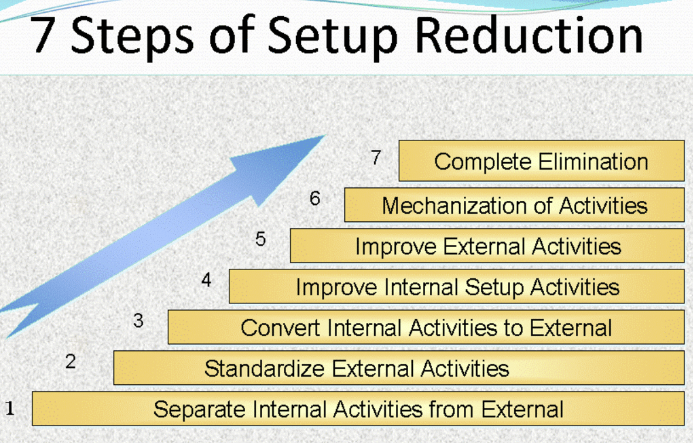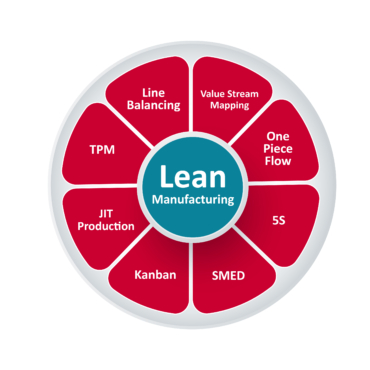Lean Manufacturing has many tools that can improve the performance of your facility.
Let’s delve into the importance of one specific tool…setup reduction and the benefits of Single-Minute Exchange of Die (SMED) in manufacturing and production process.
- Reduced Downtime:
- One of the primary advantages of SMED is the significant reduction in setup time. This means less downtime between production runs. The ability to change setups quickly allows for more efficient use of machinery, leading to increased overall productivity.
- Increased Production Flexibility:
- Quick changeovers enable manufacturers to respond rapidly to changes in customer demand or product specifications. This increased flexibility is crucial in today’s dynamic market where product life cycles are getting shorter, and customer preferences are changing more frequently.
- Enhanced Productivity:
- Reduced set-up times mean more time spent on actual production. This leads to higher throughput and increased productivity without the need for additional resources.
- Batch Size Flexibility:
- SMED facilitates the economical production of smaller batch sizes. Manufacturers can produce smaller quantities without incurring excessive setup costs, allowing for more efficient inventory management and reduced storage costs.
- Quality Improvement:
- Setup reduction often involves standardizing and simplifying processes, which can contribute to improved product quality. Standardized setups are more likely to be error-free, reducing the risk of defects during production.
- Cost Savings:
- By minimizing setup times, manufacturers can significantly reduce costs associated with idle equipment, overtime pay, and excess inventory. This contributes to a more efficient use of resources and a reduction in overall production costs.
- Employee Morale and Engagement:
- Quick changeovers can lead to increased job satisfaction among employees. The repetitive and time-consuming nature of setups can be tedious and demoralizing. SMED encourages involvement and empowerment of operators in the setup process, fostering a sense of ownership and pride in their work.
- Improved Equipment Utilization:
- SMED often involves optimizing equipment for faster changeovers. This can lead to better utilization of existing machinery, delaying the need for new investments and capital expenditure.
- Competitive Advantage:
- Quick response to market demands and the ability to produce a variety of products efficiently can provide a competitive edge. Companies that implement SMED effectively are better positioned to adapt to changing market conditions and outperform competitors.
- Lean Manufacturing Principles:
- SMED is a key component of lean manufacturing. By eliminating waste associated with long changeover times, companies align themselves with lean principles, focusing on efficiency, continuous improvement, and customer value.
In summary, the importance of setup reduction, particularly through the implementation of SMED, lies in its ability to enhance efficiency, flexibility, and overall competitiveness in today’s dynamic manufacturing environment. It’s a cornerstone of lean manufacturing philosophy, promoting continuous improvement and resource optimization.
GKW Business Solutions is working with organizations on Weeklong Workshops to reduce Setup Time. Give us a call to discuss how we may be able to assist.




